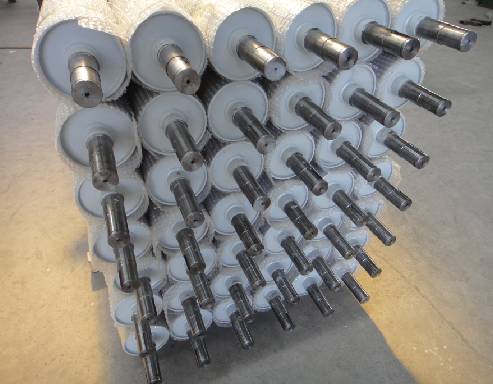 Afrikaans
Afrikaans  Albanian
Albanian  Amharic
Amharic  Arabic
Arabic  Armenian
Armenian  Azerbaijani
Azerbaijani  Basque
Basque  Belarusian
Belarusian  Bengali
Bengali  Bosnian
Bosnian  Bulgarian
Bulgarian  Catalan
Catalan  Cebuano
Cebuano  Corsican
Corsican  Croatian
Croatian  Czech
Czech  Danish
Danish  Dutch
Dutch  English
English  Esperanto
Esperanto  Estonian
Estonian  Finnish
Finnish  French
French  Frisian
Frisian  Galician
Galician  Georgian
Georgian  German
German  Greek
Greek  Gujarati
Gujarati  Haitian Creole
Haitian Creole  hausa
hausa  hawaiian
hawaiian  Hebrew
Hebrew  Hindi
Hindi  Miao
Miao  Hungarian
Hungarian  Icelandic
Icelandic  igbo
igbo  Indonesian
Indonesian  irish
irish  Italian
Italian  Japanese
Japanese  Javanese
Javanese  Kannada
Kannada  kazakh
kazakh  Khmer
Khmer  Rwandese
Rwandese  Korean
Korean  Kurdish
Kurdish  Kyrgyz
Kyrgyz  Lao
Lao  Latin
Latin  Latvian
Latvian  Lithuanian
Lithuanian  Luxembourgish
Luxembourgish  Macedonian
Macedonian  Malgashi
Malgashi  Malay
Malay  Malayalam
Malayalam  Maltese
Maltese  Maori
Maori  Marathi
Marathi  Mongolian
Mongolian  Myanmar
Myanmar  Nepali
Nepali  Norwegian
Norwegian  Norwegian
Norwegian  Occitan
Occitan  Pashto
Pashto  Persian
Persian  Polish
Polish  Portuguese
Portuguese  Punjabi
Punjabi  Romanian
Romanian  Russian
Russian  Samoan
Samoan  Scottish Gaelic
Scottish Gaelic  Serbian
Serbian  Sesotho
Sesotho  Shona
Shona  Sindhi
Sindhi  Sinhala
Sinhala  Slovak
Slovak  Slovenian
Slovenian  Somali
Somali  Spanish
Spanish  Sundanese
Sundanese  Swahili
Swahili  Swedish
Swedish  Tagalog
Tagalog  Tajik
Tajik  Tamil
Tamil  Tatar
Tatar  Telugu
Telugu  Thai
Thai  Turkish
Turkish  Turkmen
Turkmen  Ukrainian
Ukrainian  Urdu
Urdu  Uighur
Uighur  Uzbek
Uzbek  Vietnamese
Vietnamese  Welsh
Welsh  Bantu
Bantu  Yiddish
Yiddish  Yoruba
Yoruba  Zulu
Zulu Head Pulley Design and Functionality in Belt Conveyor Systems
Understanding Belt Conveyor Head Pulleys
Belt conveyors are essential components in various industries, serving the role of transporting materials efficiently over both short and long distances. At the heart of these systems is the head pulley, which plays a pivotal role in the operation of the conveyor. This article explores the function, types, and maintenance of belt conveyor head pulleys, providing insights into their importance and impact on conveyor performance.
What is a Head Pulley?
The head pulley is located at the discharge end of a belt conveyor system. It is the component around which the conveyor belt wraps and is typically driven by a motor. The head pulley serves two main purposes it drives the conveyor belt forward and facilitates the discharge of materials loaded onto the belt.
When the motor activates the head pulley, it generates motion that pulls the belt and any materials on it towards the discharge area. As the belt moves over the head pulley, it also allows for the effective unloading of the materials, preparing them for further handling or processing.
Types of Head Pulleys
Head pulleys can be classified into several types based on their design and functionality
1. Drive Pulleys These are the most common type and are used to drive the belt. They often feature a textured surface to provide better grip, ensuring that the belt remains in contact with the pulley.
2. Tail Pulleys Though not purely head pulleys, understanding tail pulleys is essential. Tail pulleys are found at the opposite end of the conveyor and are used primarily for tensioning the belt.
4. Magnetic Pulleys These pulleys are equipped with magnetic fields that help separate ferrous materials from non-ferrous ones as they pass along the belt.
belt conveyor head pulley

5. Self-Cleaning Pulleys Designed to prevent material buildup, these pulleys feature a design that utilizes centrifugal force to release materials stuck to the pulley surface.
Maintenance of Head Pulleys
Regular maintenance of head pulleys is crucial to ensuring the smooth operation of a belt conveyor system. Neglect can lead to issues such as belt misalignment, wear, and operational inefficiency. Here are some maintenance best practices
- Visual Inspections Frequent inspections can help detect signs of wear or damage on the pulley and belt. Look for abrasions, cracks, or unusual wear patterns.
- Alignment Checks Misalignment can cause excessive wear and decrease efficiency. Ensure that the head pulley is properly aligned with the belt and other components.
- Cleaning Pulleys should be kept clean to prevent material buildup, which can affect performance and lead to premature wear.
- Lubrication Regularly lubricate bearings and other moving parts to minimize friction and wear, ensuring the head pulley operates optimally.
- Replacement Pay attention to signs that a pulley needs to be replaced, such as severe wear or physical damage. Early replacement can prevent more extensive damage to the entire conveyor system.
Conclusion
In summary, head pulleys are crucial components of belt conveyor systems, directly influencing their operational efficiency and material handling capability. Understanding the types of head pulleys, their functions, and maintenance requirements is vital for anyone involved in utilizing conveyor systems. Proper management of these critical components ensures that industries can rely on conveyors for timely and efficient material transport, ultimately contributing to their productivity and success.
-
Revolutionizing Conveyor Reliability with Advanced Rubber Lagging PulleysNewsJul.22,2025
-
Powering Precision and Durability with Expert Manufacturers of Conveyor ComponentsNewsJul.22,2025
-
Optimizing Conveyor Systems with Advanced Conveyor AccessoriesNewsJul.22,2025
-
Maximize Conveyor Efficiency with Quality Conveyor Idler PulleysNewsJul.22,2025
-
Future-Proof Your Conveyor System with High-Performance Polyurethane RollerNewsJul.22,2025
-
Driving Efficiency Forward with Quality Idlers and RollersNewsJul.22,2025





























